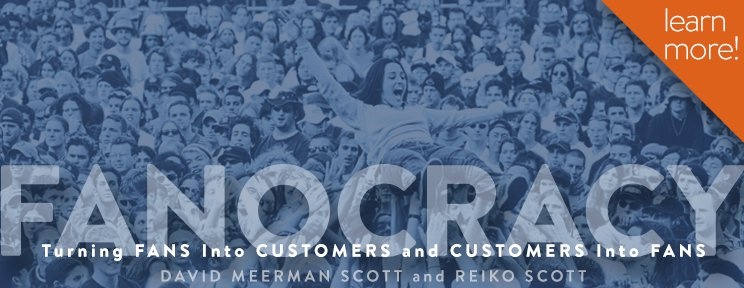Influencer Marketing VS. Brand Advocacy: Comparing Fandom Strategies
February 18th, 2020
6 min read

Stop me if you’ve heard this before: You browse online for a new product, visit a website, check out what's available, and then exit out of the webpage. Then for the next week, all you can see on your social media feeds are ads of the product you searched earlier. I get that targeted ads are a thing, and that cookies are meant to make your internet experience “better”, but boy the retargeting can be creepy!
I’m not the only person that’s tired of seeing these kinds of ads. 92% of consumers trust “earned media” — recommendations from trusted sources — more than any other form of advertising. Knowing this, businesses should consider altering their strategies to establish credible, customer-centric marketing. And that gets at the core of fandom: earning the trust of customers by putting their needs above all else.
Two strategies immediately come to mind: Influencer marketing and brand advocacy. While influencers have been getting more attention from the media as of late, brand advocates have a powerful role in growing fans and winning new business, too.
In this post, I’ll break down who influencers and brand advocates are as well as how they help build fandom. Then I’ll explain when each of these options might be best suited for your business.
Influencer Marketing and Building Fandom
Influencers have increasingly become a source for people looking to buy products and services. According to the Digital Marketing Institute, almost 50% of all consumers depend on recommendations from influencers, and 60% of teens take the recommendations of influencers over celebrities.
Okay, so those stats might make you double-take, but what is an influencer exactly?
Definition of an Influencer
 Influencers are people who have the ability to change the behavior of others. They aren’t employed directly by companies, so their opinions feel honest. By creating authentic and valuable content for specific niches, influencers gain credibility from others and become trusted sources of information. It’s no surprise then that influencers have been able to grow communities of passionate fans.
Influencers are people who have the ability to change the behavior of others. They aren’t employed directly by companies, so their opinions feel honest. By creating authentic and valuable content for specific niches, influencers gain credibility from others and become trusted sources of information. It’s no surprise then that influencers have been able to grow communities of passionate fans.
Influencers exist across countless market niches ranging from power tools to power yoga. They also have follower bases ranging from the hundreds to the millions. Businesses have been realizing this game-changing marketing opportunity, so much so that the influencer marketing industry is on pace to be $10 billion by 2020.
When it comes to paying influencers, the cost per engagement ranges anywhere from $75 to $250 for smaller influencers, $250 to $1,000 for mid-size influencers, and well over $1,000 for larger influencers. (An Instagram post from a Kardashian would be hundreds of thousands of dollars). Some mega influencers have even become millionaires through their massive followings.
While influencers can be a valuable way to reach a marketplace, always remember that it is paid advertising. Just like billboards by the side of the road, a page in a magazine, or 30 seconds on a TV show, with influencers you are simply paying for access. And when you stop paying, the access dries up.
Growing Fandom with Influencers
One of the best benefits of fandom is strong brand awareness. For these benefits to truly impact your business, you’ll need to have an audience to witness your fan-worthy marketing, though.
Getting an audience of passionate fans for your business does not happen overnight. You need to work hard to build authentic, genuine connections with customers that value them above all else — that’s essential to building any kind of fanbase.
With influencers, you can spread your fan-worthy message to a wide range of people via a trusted source of information. People may be skeptical of a company, no matter how great it is. They are far less likely to be skeptical of people who have already earned their trust. Influencers are a quick and trust-worthy way for your business to reach new audiences.
Gymshark is a model for businesses looking to maximize the effectiveness of influencers to build brand fandom. Gymshark already has a strong brand identity that resonates with passionate fans of fitness, but the company uses influencers to further expand their reach.
Gymshark’s branded instagram accounts have 3.9 million followers, 2.5 million followers, and 773 thousand followers, respectively. However, Gymshark reaches over 15.5 million people through the audiences of its influencers. Gymshark influencers are all well-respected members of the fitness community with significant fanbases. When Gymshark partners with these influencers, the fans of the influencers become the fans of Gymshark!
This does more than just increase follower counts on instagram. Even in the face of cheaper alternatives like AmazonBasics as well as more established options like Nike and Adidas, Gymshark did $300 million in sales in 2019. Passionate fans have helped the company compete against strong industry competition, but influencers who embody the spirit of Gymshark have helped it grow its audience to another level.
Brand Advocacy and Building Fandom
 Despite advances in advertising and marketing technology, word of mouth marketing still matters to consumers: 74% of consumers indicate word of mouth as important in purchasing decisions. Every company wants people to say nice things about them, but how can you control the dialogue around your business? By working with brand advocates.
Despite advances in advertising and marketing technology, word of mouth marketing still matters to consumers: 74% of consumers indicate word of mouth as important in purchasing decisions. Every company wants people to say nice things about them, but how can you control the dialogue around your business? By working with brand advocates.
What is a Brand Advocate
Brand advocates are people who eagerly share their experiences about a businesses they like. In other words, brand advocates are fans who love to share their passion and excitement with others. When businesses focus on the needs of customers, they will gain plenty of amazing fans. And these fans often advocate for businesses that genuinely care about their customers. This will lead to more positive word of mouth exposure and more trust with consumers.
As long as a person is eager to share what they know about your company, then they can be a brand advocate. This means that brand advocates could be influencers with large followings, your employees, or happy customers.
This also means that there are often no additional costs to working with brand advocates! Employees and customers advocating for your business do so out of passion rather than payment (though rewarding your brand advocates is a good idea).
With the different kinds of brand advocates, how can your business use brand advocacy to build fandom best?
Growing Fandom with Brand Advocates
A benefit of fandom is customer loyalty — fandom builds relationships with customers, increases life-time value for customers, and reduces marketing spend all in one. But why grow customer loyalty in silence? Here’s where brand advocates can amplify this benefit of fandom even further.
Your company can only have so many branded marketing channels, but brand advocates serve as unique marketing channels that have multiple followings. With even 3 brand advocates, your company has that many more avenues to build fandom with customers. This helps to unite your customers into a community of fans who can evangelize your business at no cost to you!
If you think the extra boost to marketing is minor, think again. Brand advocacy drives $6 trillion dollars in consumer spending.
Okta, a publicly-traded identity management company, paired fandom and brand advocacy perfectly with their 2016 customer conference, Oktane. Okta had loyal customers advocate for the event on social media and online to drive sign-ups through their networks. Then at the event itself, Okta engaged and thanked these brand advocates with challenges, special meals, and awards for their promotion efforts.
Besides delivering a great experience for attendees — a great way to cultivate fandom among loyal customers — Okta had some serious customer engagement numbers to show for its efforts. The company saw a 34% increase in brand engagement with their customers, and 38 brand advocates agreed to share their success stories using Okta during the event. Fandom alone helps Okta bond with customers, but the added brand advocacy helps spread those bonds far and wide.
Influencer Marketing vs. Brand Advocacy: Which is right for you?
Influencer marketing and brand advocacy can grow and amplify fans of your business.
The choice is similar to the mix between advertising and media relations. With influencers, you pay for access. And with brand advocates you cultivate a relationship with people who enjoy your product or service which is a similar mix between paid advertising and mentions in the media - they are complimentary approaches. Many organizations will choose a combination of both.
Beyond just the benefits of fandom, these two marketing strategies yield benefits of their own. While both are effective, different situations will bring out the best in each strategy.
If you’re looking to quickly tap into new, large audiences for your business, working with influencers is the way to go. Influencers have large numbers of followers that trust their opinions, so by partnering with influencers, you will gain access to a large number of loyal fans. While you still need to build fandom for your business, influencers will give you credibility with people who may not have found your business or trusted it at face value.
To work with influencers, you’ll be looking at costs ranging from $75 to $1,000 per engagement, with engagements approaching $100,000 and up with the most famous influencers.
If you’re looking to strengthen connections with customers and encourage referrals over the long run, brand advocates will get you there. Brand advocacy gives a voice to your most loyal customers by acknowledging and validating their excitement and passion for your business. And when your best fans share their stories about your business, their friends and colleagues will take notice.
Working with most brand advocates is free of charge, so businesses on tight-budgets should look to this option to organically build fandom.
Whether you choose to use influencers, brand advocates, or both to grow fandom, you’ll be poised to gain the trust of consumers and forge meaningful relationships. And what’s more, you’ll have the potential to reach millions of potential customers and publicize the amazing experiences of your happiest fans. So what are you waiting for?
If you want to see how other businesses have succeeded through fandom, check out these 5 businesses crushing fandom right now.
You can also see the steps to building fandom for your business here.
David Meerman Scott is a business growth strategist, advisor to emerging companies, and international bestselling author of a dozen books including Fanocracy and The New Rules of Marketing & PR. His books are published in 30 languages from Arabic to Vietnamese and have sold nearly a million copies.
























